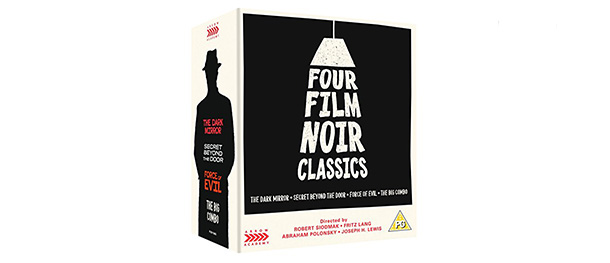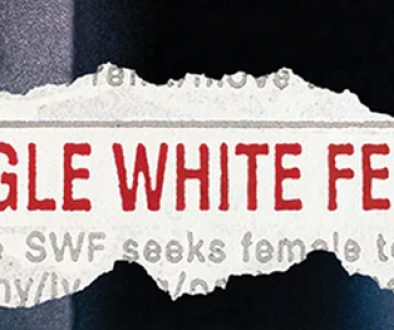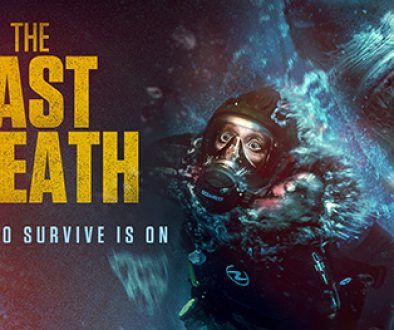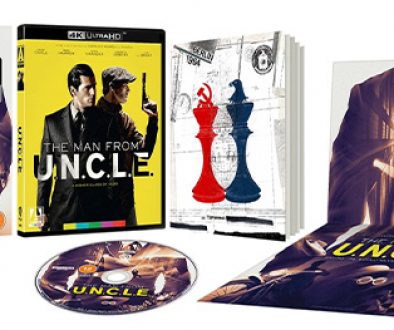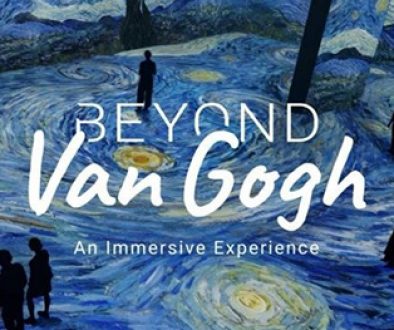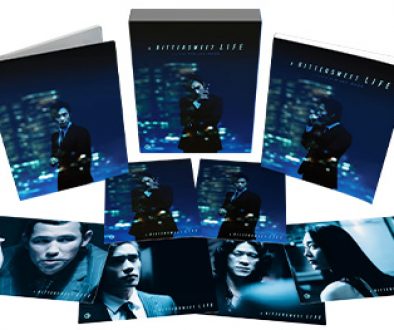Review: Four Film Noir Classics
Blu-ray & DVD: Four Film Noir Classics.
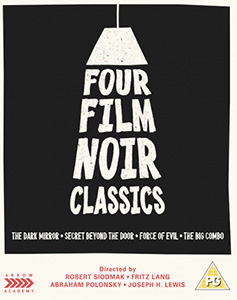 Arrow Academy have released a set of 4 Film Noirs, all much sought after, and here we have them on High Def Bluray and also DVD.
Arrow Academy have released a set of 4 Film Noirs, all much sought after, and here we have them on High Def Bluray and also DVD.
First off ‘In The Dark Mirror’ (1946) directed by Robert Siodmak (The Killers). Twins (both played Olivia de Havilland) are involved in the death of a man, but which woman did the deed?
Olivia de Havilland’s much covered and real-life duel was with her younger sister Joan Fontaine. This family feud seemed to loom large during this film. De Havilland plays the dual role of identical twin sisters, Terry and Ruth Collins in a classic take on the film noir genre, a whodunit, the film begins with a nocturnal murder and a shattered mirror, setting the tone for a quite hard hitting psychological tale that hides good (Ruth) and evil (Terry) behind female ambiguity.
Psychologist Dr. Scott Elliott (Lew Ayres) puts both Ruth and Terry through a series of examinations, including word associations, ink-blot tests and even a polygraph. His tests reveal that Terry is the culprit. This is very much a tale of its time, as Elliott attempts to explain Terry’s ‘insanity’ is founded on the basis that ALL women are jealous, and Terry is nothing short of murderous over her jealousy of Ruth. De Havilland tries to explore both twins mental states, mainly by being a bit floozy-like as Terry (which really doesn’t sit well with this actress) and rather wet as Ruth. Each character is visibly labelled; from monogrammed dressing gowns to initialed brooches, compact mirrors and these amazing oversize name necklaces. So we never get confused. Actaully these cues aren’t need as De Havilland’s acting is good enough that you can differentiate between the 2 women.
On first viewing, the film closes with a neat and happy ending, a love story, but I did wonder with another watch if it’s possible that perhaps Ruth and Terry changed roles and perhaps they were both unhinged and they aren’t sure who is who anymore? That would have been a nice twist!
In ‘Secret Beyond the Door’ (1947), Fritz Lang apparently adapts the Bluebeard legend with a dash of Daphne du Maurier’s Rebecca. Shortly after their marriage, Celia (Joan Bennett) begins to suspect her architect husband Mark (Michael Redgrave) of having a secret past, and wonders why he has multiple rooms in his self-designed home, one of which is kept permanently locked.
Secret Beyond the Door takes that popular Gothic theme of ‘someone is trying to kill me, and I think it’s my husband’, throws in a liberal dose of psychological melodrama à la Alfred Hitchcock’s Spellbound, and caps it off with a fiery finale that tips its hat to Charlotte Bronte’s Jane Eyre. Phew! All that and a devilishly handsome Michael Redgrave.
Celia, a fashionable, bored young woman with a huge trust fund who meets then quickly marries, despite an altar wobble, a mysterious British architect while she’s on vacation in Mexico. Unsurprisingly, her trepidation is well-founded. After they move into Mark’s sprawling home in New York, she finds out that not only was Mark previously married, but he also has a teenage son and a creepy housekeeper named Miss Robey (Barbara O’Neil) who covers the burn scars on the side of her face with a flowing arabesque headscarf. Of course Mark’s first wife died under mysterious circumstances, and Celia soon learns that her new husband has no money and his home is mortgaged to the hilt. Would she be worth more to Mark dead than alive?
Again, and quite usual for a film noir, there is a lot of amateur psychology at work in this story, but it’s very enjoyable nonetheless.
In Abraham Polonsky’s ‘Force of Evil’ (1948), an unscrupulous lawyer Joe Morse (John Garfield) concocts a plan to merge New York City’s numbers rackets into a single powerful and unbreakable operation, but reckons without his brother, who’d rather stay independent. This is relentlessly grim and wholly mesmerizing film noir, gazing at a world thoroughly steeped in corruption. (Director Martin Scorsese has called the film a seminal influence on his own gangster dramas Mean Streets and Goodfellas).
In a dream role Garfield is a powerful, selfish Wall Street lawyer who grew up on the streets but has risen to a place of importance. But that rise has been underhanded and corrupt, and Garfield’s office in the clouds was bought through allegiance to a criminal mob that uses him as their brains in a scheme to gain control of the city’s illegal gambling trade. Fixing the July 4th gambling racket so that the popular bet of 776 comes up the winner, Joe and mob boss racketeer Ben Tucker (Roy Roberts) plan to drive all of the small time numbers racketeers out of business when they are unable to pay out the winning bets.
Joe’s older brother Leo (Thomas Gomez), who is ill, operates a small time racket and Joe is determined to bring him into Tucker’s scheme before his office is wiped out But Leo will have nothing to do with the scheme. A line is drawn in the sand, with both brothers engaged in a battle that soon has disastrous and bloody consequences. Also involved is Leo’s pretty, naive secretary Doris Lowry (Beatrice Pearson), and Joe is drawn to her innocence despite being involved in a sordid relationship with Tucker’s wife Edna, played by one of the classic film noir femme fatales Marie Windsor.
Cracking film I’d never seen before, and my favourite of the 4 films.
Joseph H. Lewis’ ultra-stylish The Big Combo (1955), Lt. Diamond (Cornel Wilde), a cynical cop who has become obsessed with arresting Mr. Brown (Richard Conte), the head of a powerful crime syndicate who has eluded arrest for years. It soon becomes apparent that Diamond’s motivation, is driven by his attraction to Brown’s sexy mistress, Susan (Jean Wallace), a former socialite and once promising pianist whose relationship with Brown is a mixture of sexual dependency and masochism. Helping Brown in his operation is Joe McClure (Brian Donlevy), a defeated rival who now serves as his second-in-command, and a pair of hit men, Fante (a very young with hair, Lee Van Cleef) and Mingo (Earl Holliman), who are inseparable, bound together by their raging blood lust.
The Big Combo ran into trouble with Hollywood’s censorship board due to the violence and strong hint of sadomasochism. It is a surprisingly violent film, in one scene Fante and Mingo ambush Diamond’s apartment emptying their machine guns into Rita (Helene Stanton), a burlesque dancer and former girlfriend who was waiting for Diamond to come home. There is also an implied homosexual relationship between Fante and Mingo, not only are the two killers shown sleeping in the same room together but they often mirror couples in their intimate exchanges with each other.
Perhaps the most controversial scene of the film is one which defines the master-slave/sado masochistic relationship of Brown and Susan. After trying to rebuff Brown’s sexual advances, Susan succumbs to his lustful kissing that begins on her lips, moves to her neck and back and travels down her body out of the camera range while we see feelings of shame and sexual ecstasy play across her face as he is obviously performing oral sex on her.
There is a real sense of perverse sexuality that I’ve never seen in another film noir, and that sense of sex and violence makes for a true Classic Noir in the best traditions of the genre.
A fantastic release from Arrow, with top notch extras.
LIMITED EDITION CONTENTS:
• Limited Edition Dual Format Collection [2000 copies]
• High Definition Blu-ray (1080p) and Standard Definition DVD presentation of four film noir classics: The Dark Mirror (Robert Siodmak, 1946), Secret Beyond the Door (Fritz Lang, 1947), Force of Evil (Abraham Polonsky, 1948), and The Big Combo (Joseph H. Lewis, 1955)
• Commentaries on all films by leading scholars and critics Adrian Martin (on The Dark Mirror), Alan K. Rode (on Secret Beyond the Door), Glenn Kenny and Farran Smith Nehme (on Force of Evil), and Eddie Muller (on The Big Combo) • Noah Isenberg on The Dark Mirror, the author and scholar provides a detailed analysis of the film
• Noah Isenberg on The Dark Mirror, the author and scholar provides a detailed analysis of the film
• Barry Keith Grant on Secret Beyond the Door, the author and scholar introduces the film
• The House of Lang: A visual essay on Fritz Lang’s style by filmmaker David Cairns with a focus on his noir work
• Introduction to Force of Evil by Martin Scorsese
• An Autopsy on Capitalism: A visual essay on the production and reception of Force of Evil by Frank Krutnik, author of In a Lonely Street: Film noir, genre, masculinity
• Commentary on selected Force of Evil themes by Krutnik
• Geoff Andrew on The Big Combo, the critic and programmer offers an introduction to and analysis of the film
• Wagon Wheel Joe: A visual essay on director Joseph H. Lewis by filmmaker David Cairns
• The Big Combo original screenplay (BD/DVD-ROM content)
• Four radio plays, starring Olivia de Havilland and John Garfield among others
• Trailers
• Reversible sleeves featuring original and newly commissioned artwork by Scott Saslow for all films
• Hardback book featuring new writing on all the films by noir experts and critics including Michael Brooke, Andrew Spicer, David Cairns and Tony Rayns, production stories, re-prints featuring Fritz Lang, Abraham Polonsky, Cornel Wilde, The Dark Mirror consultant Dr Mary Romm, contemporary reviews, and credits for all films, illustrated with original stills [Limited Edition Exclusive]
You can buy Four Film Noir Classics by clicking HERE. ALL money raised by purchasing from Amazon via our website is given back to our listeners and followers in upcoming competition prizes. The more people buy, the bigger our prizes!
Review by Tina (co-host of 60 Minutes With) from discs kindly supplied by Arrow Films.

